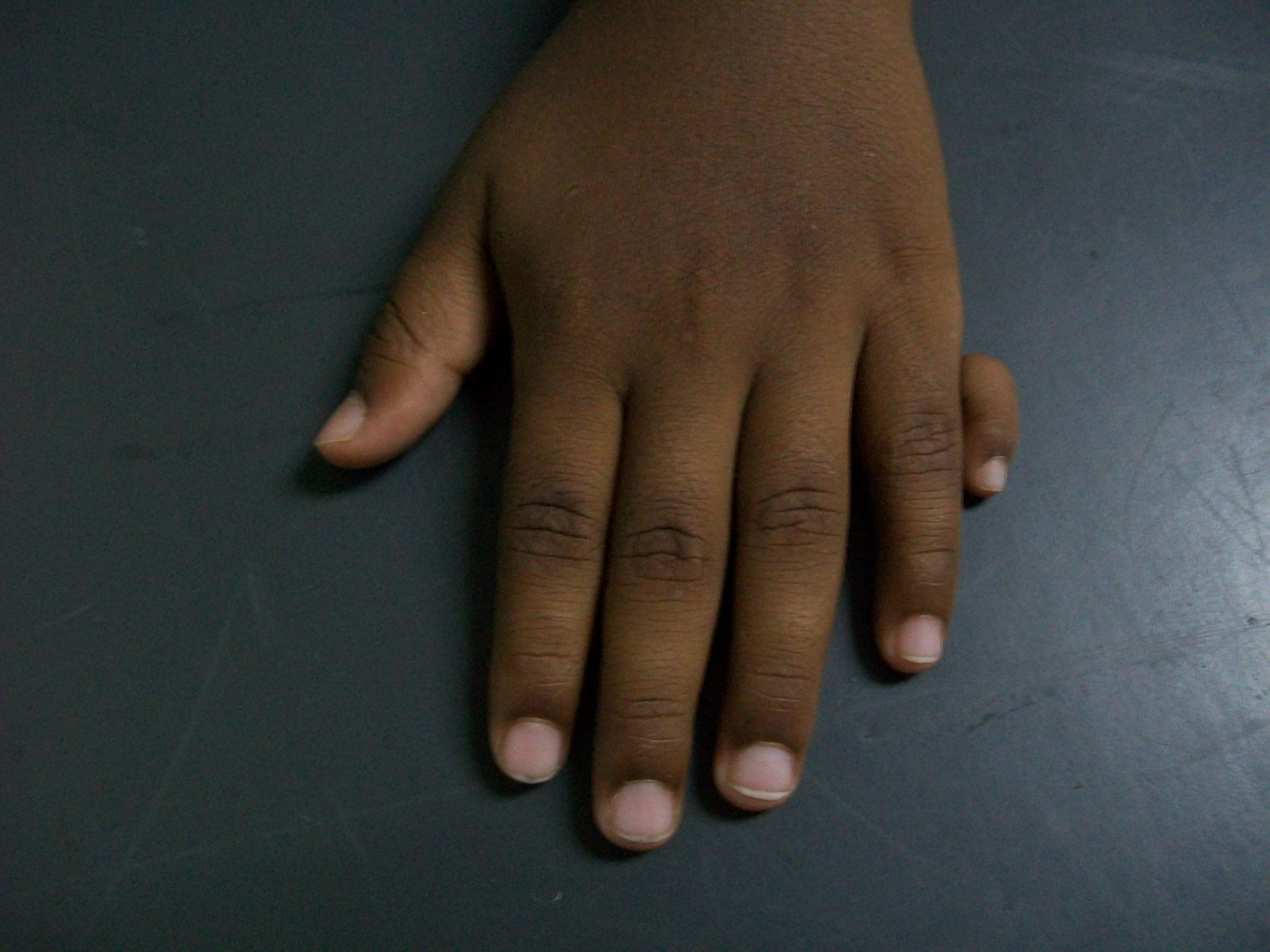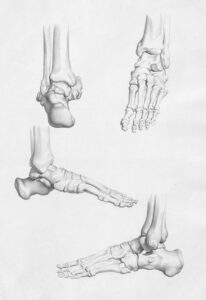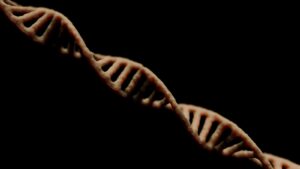The human body, composed of intricate systems, can produce remarkable variations due to slight genetic modifications. One of these variations, seen across many populations and even throughout history, is the presence of six fingers or toes—a condition scientifically referred to as polydactyly. This congenital condition, where individuals have more than the usual five fingers or toes, has captivated the curiosity of both scientists and laypeople alike. While six fingers may seem unusual or rare, it is a well-documented phenomenon in both humans and animals, offering insights into developmental biology, genetics, and evolutionary processes.
This article will explore why some people are born with six fingers, the genetic mechanisms behind this occurrence, the types of polydactyly, and how historical and cultural perspectives have shaped our understanding of this condition. Additionally, we will examine the current and potential future medical approaches to treating polydactyly.
What is Polydactyly?
Polydactyly, derived from the Greek words poly (many) and dactylos (fingers or toes), is a congenital anomaly that involves the presence of one or more extra digits on the hands or feet. Although most people are born with five digits on each limb, polydactyly occurs more frequently than one might assume, affecting approximately 1 in 500 to 1,000 live births. It is one of the most common congenital limb anomalies.
Polydactyly can manifest in a wide variety of forms. In some cases, the extra digit may be fully formed and functional, while in others, it may appear as a small, underdeveloped nub of tissue. In either case, the condition can raise questions regarding its cause, prevalence, and impact on human evolution.
Interestingly, polydactyly is not limited to humans; it can also occur in animals. Some cat breeds, such as the Hemingway cats, are known for having extra toes, which are believed to provide better balance and climbing ability. The presence of polydactyly in other species further highlights the evolutionary significance of this condition.
Types of Polydactyly
Polydactyly can be classified into three primary categories, depending on the location of the extra digit: preaxial, postaxial, and central polydactyly.
1. Preaxial Polydactyly
Preaxial polydactyly occurs when the extra digit is located on the thumb side of the hand or the big toe side of the foot. This type of polydactyly is less common than other forms and is often associated with more complex genetic syndromes. Individuals with preaxial polydactyly may have an additional thumb or big toe, which may or may not be fully functional.
In some cases, preaxial polydactyly is a feature of syndromic conditions such as Holt-Oram syndrome, which affects the bones of the arms and hands and is often accompanied by heart defects. The presence of extra digits in these cases can indicate broader developmental issues, which may require medical intervention beyond the removal of the extra finger or toe.
2. Postaxial Polydactyly
Postaxial polydactyly is the most common form of the condition, where the additional digit appears on the pinky side of the hand or the little toe side of the foot. This type of polydactyly can range from a small, fleshy nub to a fully developed extra finger. Postaxial polydactyly is often isolated, meaning it occurs without other congenital abnormalities or syndromes, and can be treated more easily.
In certain populations, such as in individuals of African descent, postaxial polydactyly is particularly common. Studies have shown that African Americans are more likely to be born with this condition than individuals of European or Asian ancestry. This increased prevalence highlights how genetic and environmental factors can vary across different populations.
3. Central Polydactyly
Central polydactyly is a rare form in which the extra digit arises from the center of the hand or foot. The extra finger can disrupt the normal alignment of the digits, leading to a more complex hand deformity. In many cases, central polydactyly is associated with other limb abnormalities or genetic syndromes, and surgical correction is often required to restore normal hand or foot function.
Although rare, central polydactyly provides valuable insight into the mechanisms that control limb development, as it involves the disruption of normal patterning processes in the embryonic stage.
Genetic Causes of Polydactyly
The development of fingers and toes is a tightly regulated process during embryogenesis, and polydactyly occurs when the genetic instructions guiding limb formation are altered. Polydactyly is primarily caused by mutations in specific genes that control limb patterning and growth. The most well-studied of these genes are GLI3 and SHH (Sonic Hedgehog), both of which play essential roles in the proper formation of digits.
1. GLI3 Gene Mutations
The GLI3 gene is critical for normal limb development, and mutations in this gene can lead to various forms of polydactyly. GLI3 mutations are often linked to syndromic conditions, such as Greig cephalopolysyndactyly syndrome and Pallister-Hall syndrome, which affect not only the number of digits but also other aspects of physical development.
In Greig cephalopolysyndactyly syndrome, individuals typically exhibit preaxial polydactyly, as well as broader skull anomalies and intellectual disabilities. The GLI3 gene, through its interactions with other developmental pathways, helps regulate the formation and patterning of the fingers and toes, making it a crucial gene in the study of polydactyly.
2. The Sonic Hedgehog (SHH) Pathway
The Sonic Hedgehog (SHH) signaling pathway is one of the most famous pathways in developmental biology, as it governs many aspects of early embryonic growth. The SHH gene and its associated pathways control the growth and differentiation of cells in the developing limb bud, ensuring that the correct number of fingers and toes form.
Mutations or disruptions in the SHH pathway can lead to the development of extra digits, as the gene’s role in determining the boundaries between digits is compromised. In particular, overexpression of SHH in the limb bud has been shown to result in the formation of extra digits, as the normal patterning process is overridden by the excessive signaling.
Recent research has demonstrated that tweaking SHH expression in laboratory settings can produce polydactyly-like conditions in animal models, providing deeper insights into how this pathway contributes to limb development and variation. This knowledge may one day pave the way for more advanced interventions in both congenital limb anomalies and regenerative medicine.
Is Polydactyly Hereditary?
Polydactyly can be hereditary and often follows an autosomal dominant inheritance pattern. This means that if one parent has the condition, there is a 50% chance of passing it on to their children. The severity, location, and functional implications of the extra digit may vary within families, with some members having a small, non-functional nub and others a fully formed and functional extra digit.
For example, a family might include several generations with different manifestations of the condition. In some cases, the extra digits may be surgically removed in infancy, while in others, individuals may choose to retain the extra digit, especially if it is functional or provides added dexterity. Indeed, some historical figures, such as Anne Boleyn (the second wife of King Henry VIII), were rumored to have an extra finger, though this has been a topic of historical debate.
Polydactyly can also occur spontaneously, meaning that it may appear in individuals with no family history of the condition. These sporadic cases often arise from new genetic mutations during development, rather than being inherited from parents.
Environmental and Developmental Factors
While genetics is the primary cause of polydactyly, environmental and developmental factors can also play a role in its occurrence. These factors can interfere with the normal signaling pathways that guide the formation of the limbs, leading to anomalies like polydactyly.
1. Maternal Health
A mother’s health during pregnancy can impact fetal development, including limb formation. Conditions such as diabetes, exposure to certain infections, or the use of specific medications can increase the risk of congenital anomalies, including polydactyly.
2. Teratogens
Teratogens are substances that can cause birth defects by interfering with normal embryonic development. Examples of teratogens include alcohol, certain prescription medications, recreational drugs, and environmental chemicals. If a pregnant woman is exposed to teratogens during critical periods of fetal development, it can result in malformations, including extra fingers or toes.
3. Nutritional Deficiencies
Proper maternal nutrition is essential for the development of the fetus. Nutritional deficiencies, particularly a lack of folic acid, have been linked to an increased risk of limb malformations. Folic acid plays a crucial role in cell division and DNA synthesis, making it vital for proper embryonic growth. Inadequate intake of this nutrient during pregnancy can lead to a variety of congenital anomalies, including polydactyly.
Historical and Cultural Perspectives on Polydactyly
Polydactyly has a long history of cultural significance, with individuals born with extra digits often being viewed with a mixture of awe, curiosity, and superstition. In some cultures, individuals with six fingers were considered to possess supernatural abilities, while in others, they were stigmatized or ostracized.
In ancient civilizations, such as among certain Native American tribes, individuals with polydactyly were revered as having special spiritual significance. Their extra digits were seen as a sign of strength or divine favor. In contrast, other societies regarded polydactyly as a bad omen or a curse, leading to discrimination or social exclusion.
One famous example from history is the author and physician Sir Walter Scott, who suffered from a form of postaxial polydactyly. Despite his physical condition, Scott went on to become one of the most influential figures in 19th-century literature, showing that the presence of an extra digit need not hinder an individual’s success.
Treatment Options for Polydactyly
The treatment for polydactyly depends on the location, functionality, and size of the extra digit. In many cases, particularly when the extra digit is non-functional or causes discomfort, surgical removal is recommended. The procedure is typically performed when the child is between six months and two years old, allowing for early correction with minimal impact on hand or foot development.
Surgical Procedure
The surgical removal of the extra digit, known as excision, is usually straightforward and has a high success rate. It is often performed on an outpatient basis, meaning the child can return home the same day. The goal of surgery is not only to improve the appearance of the hand or foot but also to restore functionality if the extra digit impairs the child’s ability to use their hands or feet effectively.
Functional Considerations
In cases where the extra digit is fully formed and functional, some individuals may choose not to undergo surgery. While having an extra finger or toe may cause difficulties in wearing certain shoes or gloves, it can also provide unique advantages in grip strength or hand dexterity.
For example, in rare cases where the extra digit is well-developed, individuals may find that the additional finger enhances their ability to perform tasks that require fine motor skills. In these instances, the decision to remove the digit may be more aesthetic than functional, allowing individuals to maintain their unique physical traits.
Future Research: Genetic Engineering and Regenerative Medicine
Advancements in genetic research and regenerative medicine are opening new doors for understanding and treating polydactyly. One of the most promising areas of research is the use of CRISPR-Cas9 gene-editing technology to correct the mutations responsible for polydactyly. By targeting specific genes involved in limb development, scientists hope to prevent the formation of extra digits in utero.
In addition to gene editing, stem cell research and tissue engineering may provide new ways to regenerate properly formed limbs in individuals with congenital anomalies. By harnessing the body’s natural healing processes, researchers may one day be able to guide the growth of healthy, functional limbs in individuals with conditions like polydactyly.
Conclusion
Polydactyly, the presence of an extra finger or toe, offers a fascinating glimpse into the complexity of human development and genetics. While having six fingers may seem rare or unusual, it is a relatively common condition that can be influenced by a variety of genetic, environmental, and developmental factors. Understanding the causes and mechanisms behind polydactyly not only sheds light on the process of limb development but also paves the way for future treatments through genetic engineering and regenerative medicine.
As our knowledge of genetics and developmental biology continues to grow, the potential for more precise interventions in congenital conditions like polydactyly becomes increasingly promising. In the meantime, embracing the diversity of human anatomy allows us to better appreciate the complexities of our genetic code and the many ways it shapes who we are.




